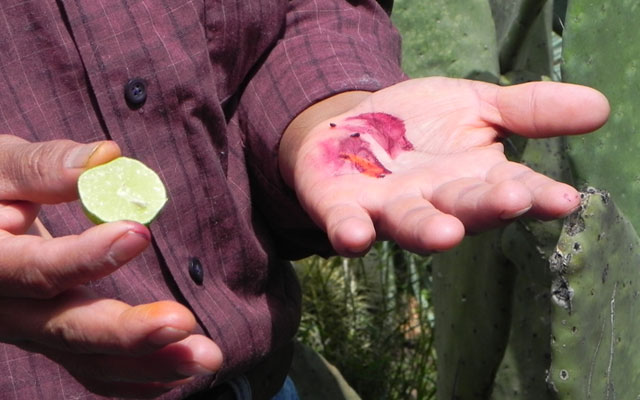 Day of the Dead, celebrated November 1 & 2 in Mexico, was originally celebrated for an entire month. This pre-Colombian festival welcomes back the dead to celebrate with the living each year. The children are welcomed back on November 1st and the adults on November 2nd. We think the origin of Day of the Dead was a celebration to honor an Aztec goddess, Mictecacihuatl.
Day of the Dead, celebrated November 1 & 2 in Mexico, was originally celebrated for an entire month. This pre-Colombian festival welcomes back the dead to celebrate with the living each year. The children are welcomed back on November 1st and the adults on November 2nd. We think the origin of Day of the Dead was a celebration to honor an Aztec goddess, Mictecacihuatl.
Many people make sand or sawdust “tapetes” in the cemeterys streets and park around Day of the Dead. The photo above is a sand “tapete” outside of the old cemetery in Oaxaca. Some of these tapetes are very elaborate and three dimensional.
Thousands of Mexicans and tourists visit the cemeteries in Oaxaca during the celebration of Day of the Dead. The families stay at the gravesite, eating and drinking through the night, and often hire Mariachi bands to play music. This is not so unusual for us because we have music at funerals as well. In my town we visit other families especially those families who have recently lost a member. We eat a special bread called “Pan de Muerto” (Bread of the Dead) which is similar to Challah bread.
In Mexico we often have an altar in our homes to honor our family members but for Day of the Dead we build more altars in cemeteries, parks, pedestrian walks, and in many other public places. These are decorated with figurines, candles, photos, food, skulls and other sculptures made of sugar, drinks and other things for the departed. And always we decorate with marigold, which in Mexico is called “cempaxúchitl”. This is an Aztec (Nahuatl) word. I don’t speak Nahuatl-it is very different from my language Zapotec-so I checked with Daniel Kaufman, a Nahuatl speaker from the Endangered Language Alliance and found that Cempaxúchitl means “20 flowers” (cempohualli – twenty, xochitl – flower). And he said the “x should be a sh sound as in ship”. Thanks to Mr. Kaufman for his help!
I can use cultivated marigold and wild marigold to make yellow dyes. The photos from my workshop at “el Charco” in San Miguel de Allende show yellow yarns dyed with wild marigold. The wild marigold is much smaller than the cultivated marigold. Both yield a beautiful yellow yarn.

